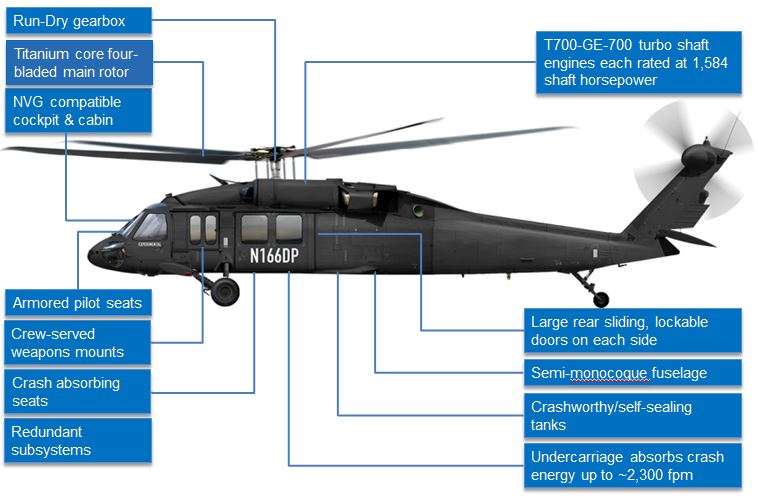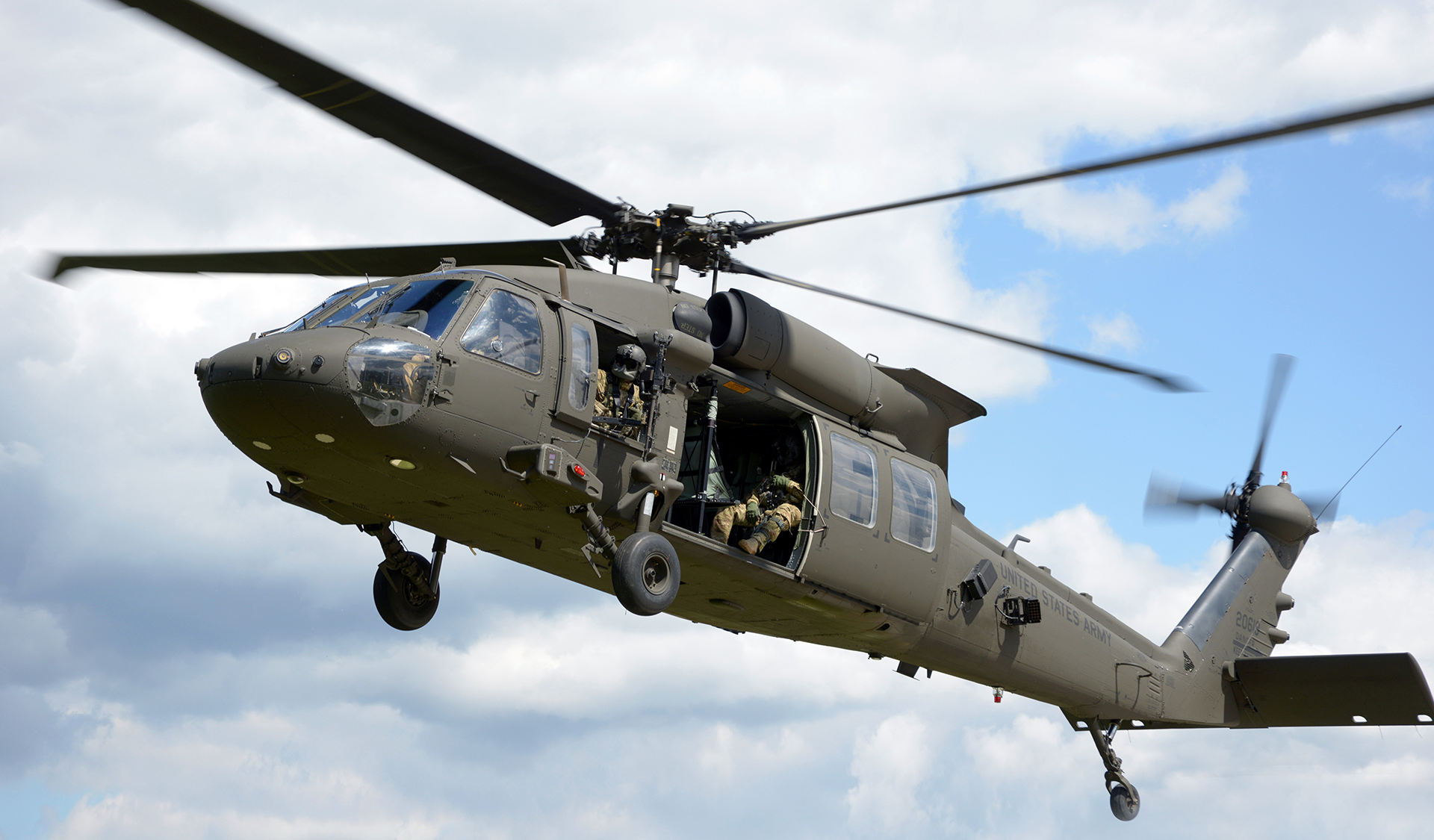What Makes the UH 60 Helicopter a Secret Property for Tactical Airlift Operations
What Makes the UH 60 Helicopter a Secret Property for Tactical Airlift Operations
Blog Article
UH-60: Developments in Modern Helicopter Style
The UH-60 helicopter stands as a standard in modern aeronautics, showcasing significant innovations in style and innovation that cater to the developing needs of army operations. As we discover the advancement and crucial technologies of the UH-60, it becomes necessary to take into consideration exactly how these advancements affect not just current applications but likewise the future landscape of helicopter layout.

Development of the UH-60
The evolution of the UH-60 Black Hawk helicopter represents a considerable milestone in aerospace engineering and army aviation. Presented in the late 1970s, the UH-60 was developed by Sikorsky Airplane to fulfill the USA Army's demand for a flexible energy helicopter qualified of carrying out a variety of missions. Its style emphasized maneuverability, resilience, and speed, establishing brand-new requirements for functional efficiency.
The UH-60 features a distinctive four-blade blades system, which boosts lift and stability, permitting it to operate successfully in varied settings. Its airframe is built from sophisticated composite products, adding to a decrease in weight while maintaining structural stability. The helicopter's layout additionally incorporates improved the rules of aerodynamics, which boosts fuel effectiveness and enhances range.
For many years, the Black Hawk has undertaken numerous upgrades to improve its capacities, including enhanced engines, progressed trip control systems, and modular systems for simple maintenance and versatility. The helicopter's capability to perform missions ranging from troop transport to medical discharge has solidified its role as a foundation of U.S. army procedures. The UH-60 Black Hawk remains a prime instance of how innovation in helicopter layout can dramatically affect military performance and functional flexibility.
Advanced Avionics Systems
Developments in avionics systems have actually changed the abilities of contemporary helicopters like the UH-60 Black Hawk, boosting operational efficiency and situational awareness (UH 60). The integration of advanced avionics allows for enhanced communication, flight, and navigating administration, making the UH-60 a lot more versatile in diverse goal profiles
One of the essential features is the advanced digital cockpit, which utilizes multifunction screens that offer real-time data, making certain pilots have instant access to essential trip details. This streamlining of info minimizes pilot workload and boosts decision-making processes during facility operations. Additionally, the consolidation of GPS and inertial navigation systems allows precise positioning and route preparation, improving objective execution in challenging atmospheres.
Additionally, progressed avionics systems boost interaction abilities through safe data links and voice communication systems, enabling smooth coordination with ground pressures and other aircraft. The integration of automatic flight control systems additionally adds to enhanced security and control, particularly in unfavorable weather problems or throughout low-altitude maneuvers.
Engine and Efficiency Enhancements
Engine performance in modern-day helicopters has taken a significant leap ahead, driven by advancements that increase dependability, performance, and power. The UH-60 Black Hawk, for instance, makes use of the T700-GE-701C engine, which includes a dual-channel, full-authority digital engine control system.
Additionally, the assimilation of engine wellness surveillance systems permits for real-time diagnostics and anticipating maintenance, dramatically improving functional reliability. These systems not only sharp teams to possible problems before they become important but likewise facilitate a lot more reliable maintenance organizing, thereby reducing downtime.

Products and Structural Innovations
Current developments in products and structural design have actually changed modern-day helicopter building and construction, improving both performance and longevity. The intro of sophisticated composite materials, such as carbon fiber enhanced polymers, has dramatically reduced weight while keeping structural honesty. This change not only boosts fuel efficiency however likewise enhances haul capacity, allowing helicopters like the UH-60 to execute more varied objectives.
Additionally, innovations in aluminum alloys and titanium parts have contributed to enhanced resistance to view corrosion and fatigue, extending the life-span of crucial airframe elements. The critical use of these materials has actually led to a decrease in upkeep needs and boosted total operational preparedness.

Furthermore, the combination of computer-aided design (CAD) and additive manufacturing innovations has actually made it possible for more complicated geometries and lightweight frameworks, optimizing the aerodynamic performance of helicopter styles. These advancements help with fast prototyping and manufacturing, enabling manufacturers to respond promptly to developing mission needs.
Safety and Survivability Features
Safety and survivability functions in modern helicopter layout have actually become paramount, showing the boosting demands for goal performance in challenging environments. The UH-60 Black Hawk, a noteworthy instance, integrates advanced technologies to improve staff and traveler security.
The helicopter likewise uses a ballistic defense system, that includes armored team seats and important systems shielding, minimizing vulnerability to small arms fire and shrapnel. Boosted situational recognition is accomplished through sophisticated avionics and sensing unit innovations, permitting pilots to identify and prevent risks properly.
Furthermore, the combination of redundancy in essential systems-- such as dual engines and several trip control channels-- makes certain continued procedure also if one system stops working. The UH-60 is geared up with advanced emergency situation flotation gadgets, enhancing survivability in water landings. Jointly, these functions not only improve the safety of employees but likewise enhance objective success prices in aggressive environments, showing the dedication to excellence in helicopter style.
Verdict
The UH-60 helicopter stands for a substantial innovation in modern aeronautics innovation, incorporating ingenious materials, innovative avionics, and durable security attributes. Its development reflects a commitment to improving performance and functional effectiveness while guaranteeing pilot and team survivability. The integration of light-weight composites and advanced navigation systems emphasizes the helicopter's adaptability in numerous military goals. In general, the UH-60 works as a standard for future advancements in helicopter layout, embodying strength and convenience in modern military procedures.
The UH-60 helicopter stands as a benchmark in contemporary air travel, showcasing considerable innovations in design and innovation that cater useful content to the evolving needs of military operations. As we check out the evolution and crucial technologies of the UH-60, it becomes necessary to take into consideration just how these growths influence not just present applications but likewise the future landscape of helicopter design.
Introduced in the late 1970s, the UH-60 was developed by Sikorsky Aircraft to meet the United States Military's requirement for a versatile utility helicopter capable of executing a range of missions. The UH-60 Black Hawk stays a prime example of how innovation in helicopter design can considerably influence army effectiveness and operational flexibility.
In general, the UH-60 offers as a criteria for future developments in helicopter design, embodying resilience and adaptability in modern military operations.
Report this page